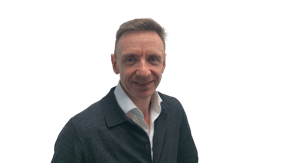18 ways HR can become more strategic with DE&I
As the race to attract the finest talent continues, organisations must craft a new and inclusive employee value proposition – and HR’s role to drive change becomes ever more critical.
Speaking at a webinar hosted by FAIRER Consulting, MD Dan Robertson emphasised the importance of aligning HR with DE&I initiatives for companies wishing to gain a strategic advantage.
A discussion followed whereby the McKinsey 7S Model was put under the spotlight. This model, which can be envisaged as a map with ‘shared values’ at its heart, with strategy, structure, systems, skills, staff and style orbiting this central tenet – all interlinked – depicts how effectiveness can be achieved within an organisation.
.png?width=768&height=576&name=6%20Steps%20Financial%20Planning%20Process%20Graph%20(1).png)
McKinsey dubs strategy, structure and systems ‘hard Ss’, while the other three are ‘soft Ss’, though, their importance and impact are arguably less soft today than when the model was first created. These elements impact one another and are all equally important when implementing change. Working through McKinsey’s robust model can help you to recognise any misalignment and help to identify areas where your vision and strategy are not pulling through into practice and perception.
We have put together a checklist, based on the McKinsey 7S model, to guide you through strategic change, with a view to helping HR build a competitive advantage through DE&I for your business.
Hard Ss
Strategy
|
Structure
|
Systems |
|
|
|
Strategy
Getting the strategy right allows you to plan effectively to maintain your competitive advantage:
- Carry out competitor and industry benchmarking so you know what best in class looks like and build DE&I into your EVP and ESG policies, regulations and practices. You can draw on lessons from other sectors, too.
- Remain tuned in to non-policy trends, such as those in the consumer market and areas of social activism. Remember, employees and potential employees will be continually assessing your values and culture. DE&I and HR professionals need to have a view on trends in the marketplace, because your employees certainly will.
- Stay aligned to the wider business plan while keeping in mind how HR and DE&I can contribute to it in a tangible way. Start with the business strategy as you need to know what the broader goals are first.
Structure
- Cross-team connectivity and alignment between HR, talent acquisition and learning and development is important. Make sure there are regular connections between these teams, DE&I and HR.
- DE&I operations committees and working groups need to include the right senior stakeholders within them and the wider organisation. This gives DE&I some authority and avoids it being siloed.
- Create governance, decision-making and accountability structures that include both DE&I and HR.
Systems
- Carry out DE&I data collection, tracking, analysis and reporting to drill down into issues such as psychological safety and belonging, as well as diversity metrics per se. Ensure data is aggregated across different groups to find out how communities respond to the same question.
- Consider using HR technology to obtain data but be aware that technology may lack the capability to capture the information that is truly needed. Work backwards from your ‘hot spots’ and understand what you wish to achieve, choosing the software to complement this.
- Agree goals and KPIs and keep these in mind when deciding how best to carry out measurements.
Soft Ss
Skills
|
Staff
|
Style
|
|
|
|
Skills
Your organisation needs the right skills to drive a successful change agenda
- Carry out inclusive leadership training to ensure that senior stakeholders offer the right levels of support and are able to elicit relevant knowledge from teams.
- Run bias training and events to understand where bias tends to exist, for example, when hiring and promoting people.
- Ensure training is aligned to legal topics such as positive action so you can, for example, legally target certain groups.
Staff
How do you position DE&I in terms of staffing?
- When it comes to employee lifecycle decisions, have structures in place for attracting, retaining and promoting key talent.
- Consider what ERG structures you have and how you support your colleagues in ERGs.
- Connect with resourcing partners to operationalise staff matters.
Style
Leadership, style, attitudes and behaviours – the unwritten expectations
- What is your senior leaders’ psychological connectivity to the topic of DE&I? There may be many different points of view and leaders need to feel psychologically safe to have the difficult conversations and to add their weight to the topic.
- The everyday behaviours of managers must align with the organisational values projected to the outside world.
- There needs to be an alignment between the business ethic and wellbeing. These agendas need to be considered together and in conjunction with things like flexible working, rewards and employee benefits and motivation.
The role of HR is to work with a wide range of diverse stakeholders to shape DE&I and the organisation’s vision, and by understanding the interactions. Using the right tools and keeping the wider business picture in mind is imperative for success.
FAIRER Consulting is happy to assist you to develop a strategy for change. Our consultants would be delighted to see how we can help.


